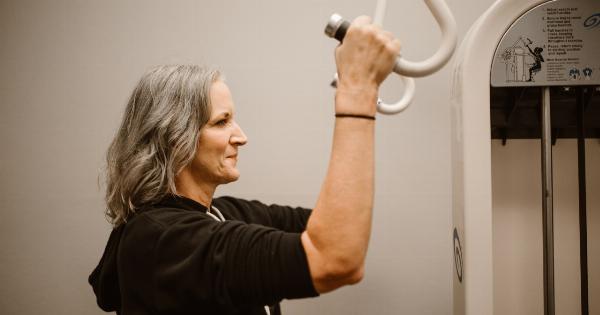For many men, becoming a father is a dream they’ve held since their own childhoods. Unfortunately, for some men, that dream can feel out of reach, especially if they’ve been diagnosed with a condition known as azoospermia.
Azoospermia is a medical condition that affects a man’s ability to produce healthy, viable sperm. In some cases, men with azoospermia produce no sperm at all, while in others, the sperm they produce is unhealthy and incapable of fertilizing an egg.
Fortunately, advancements in medical technology and new treatments have given azoospermic men hope for becoming fathers through assisted reproductive technology (ART) and assisted reproductive treatments (ART).
Understanding Azoospermia
Azoospermia can be a challenging diagnosis for men who desire fatherhood.
The World Health Organization (WHO) estimates that approximately 15% of couples experience infertility, approximately 50% of which can be attributed to male factors including azoospermia.
There are two types of azoospermia:.
Obstructive Azoospermia
This is the more common type and occurs when sperm is produced, but it cannot be released properly due to a blockage in the reproductive system.
In obstructive azoospermia, a man may have normal hormone levels, testicular function, and sperm production, but the sperm cannot be released into the semen due to an obstruction.
Blockage can occur in different parts of the reproductive system, such as the epididymis or vas deferens. In some cases, surgery can correct the blockage and restore fertility.
Non-Obstructive Azoospermia
This type of azoospermia occurs when the testicles do not produce enough healthy sperm or no sperm at all.
Causes of non-obstructive azoospermia include hormonal imbalances, genetic defects, and illnesses that affect sperm production or damage the testicles.
Non-obstructive azoospermia is often more challenging to treat than obstructive azoospermia, and patients will typically need to undergo a series of tests to determine the cause of their azoospermia.
Treatment Options for Azoospermia
Nowadays, infertility is not always a permanent condition. There are many different treatment options available for men with azoospermia. In the past, men with azoospermia had little chance of becoming fathers without the use of sperm from a donor.
Today, technological advancements in assisted reproductive technologies have provided new hope for these men.
Surgical Treatment for Azoospermia
Surgical treatments can be a viable option for men with azoospermia caused by a blockage in the reproductive system.
Surgical procedures, such as microsurgical epididymal sperm aspiration (MESA), testicular sperm extraction (TESE), and percutaneous sperm aspiration (PESA), can effectively retrieve sperm from the testicles and can be used in conjunction with in vitro fertilization (IVF) techniques.
Hormonal Therapy for Azoospermia
For men with non-obstructive azoospermia caused by hormonal imbalances, treatments such as hormonal supplements or drugs can help stimulate sperm production.
However, such hormonal treatment is only successful in a small percentage of men diagnosed with non-obstructive azoospermia, and the effect can be temporary.
Assisted Reproductive Technologies for Azoospermia
Assisted reproductive technologies (ART) have revolutionized the field of infertility treatment in recent years.
For men with azoospermia and permanent infertility, in vitro fertilization (IVF) combined with intracytoplasmic sperm injection (ICSI) may be the best option to conceive a child.
Through a procedure called ICSI, a single sperm is injected directly into an egg, which is then implanted in the woman’s uterus.
ICSI has given men with azoospermia the opportunity to become biological fathers and experience the joys of fatherhood.
Furthermore, with the advancement of technology, there now exist better methods and techniques for storing, freezing, and using sperm from azoospermic men.
Counseling for Men with Azoospermia
The diagnosis of azoospermia, like all infertility diagnoses, can be stressful and emotional for men and couples alike.
Counseling and therapy can help manage stress, foster communication, and enable couples to make informed decisions about their fertility journey.
Men with azoospermia can find solace in speaking with a therapist or counselor who specializes in infertility.
Experienced practitioners can help guide them through the physical and emotional aspects of infertility and help them explore their available options and make the best possible choices.
Surrogacy and Adoption for Men with Azoospermia
If none of the above options are right for you to treat azoospermia, surrogacy and adoption may be alternatives.
Surrogacy involves the use of a surrogate mother’s uterus to carry a baby that has been conceived through IVF with the sperm of the intended father or sperm donor.
Adoption can also provide fulfilling ways for azoospermic men to become fathers. Although the adoption process can be tiresome and lengthy, it provides a unique way to provide a better life for children who may not have otherwise had a stable home.
The Miracle of Fatherhood
The desire for fatherhood is universal, and thankfully medical advancements provide hope to azoospermic men. Men with azoospermia who long to become fathers now have a range of options and treatments at their disposal to help them achieve this dream.
Through assisted reproductive technology, counseling, and open discussions with loved ones, men with azoospermia can approach fatherhood with confidence and hope.





























